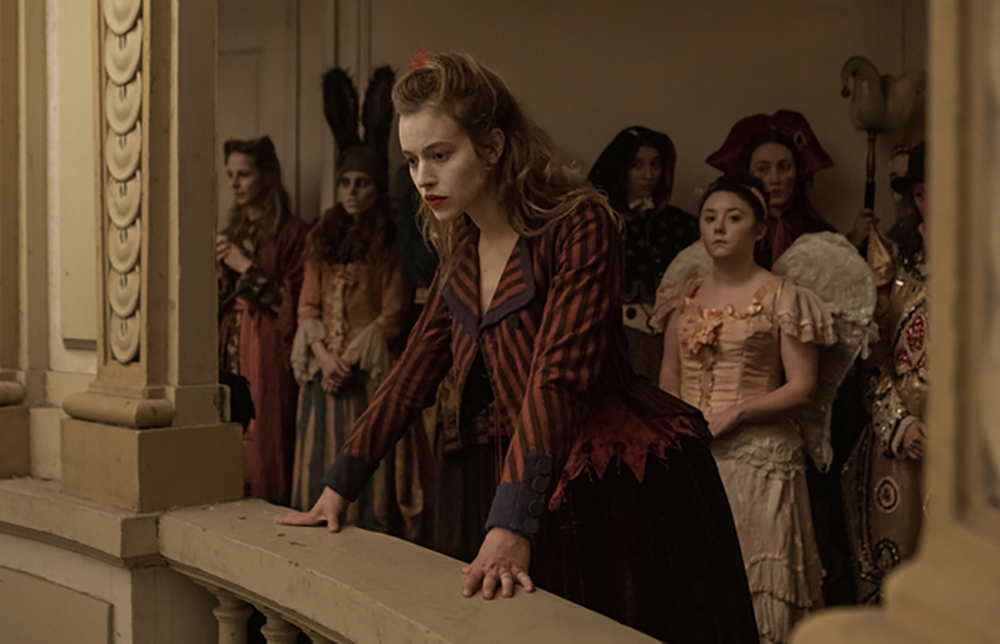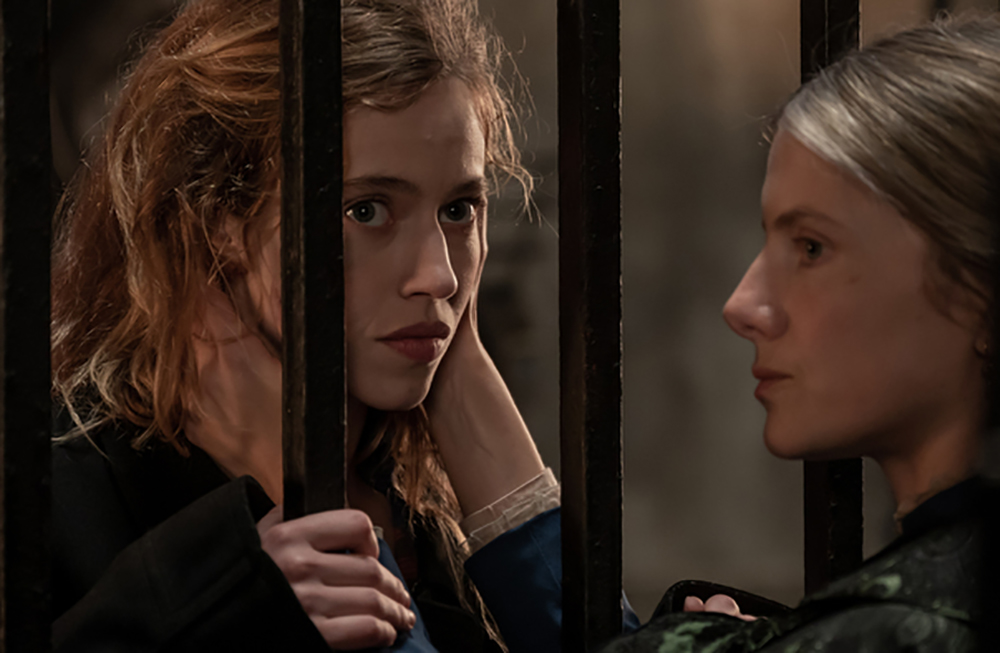“The Mad Women’s Ball” (“Le bal des folles,” original title) has something missing in its narrative that leaves the audience wanting more than what little it has to offer; at least Lou de Laâge gives a good performance worthy of a visit.
Mélanie Laurent is an exciting director who focuses on touching and dramatic films. The feature that cemented her as an eminent director to look out for was 2014’s “Breathe,” one of my favorite films of that year. The actress-turned-director followed “Breath” with another sharp outing the year after with “Tomorrow” (2015). However, she makes some misses that fail to hit the mark, 2018’s “Galveston” being one. Unfortunately, her latest feature, “The Mad Women’s Ball,” is one of those misses.
Set in late 19th-Century France during the birth of deep psychiatry, Eugénie Cléry (Lou de Laâge) is a free-spirited and independent young woman who has some aspects, like her quick biting tongue, that her father does not permit. She also has these “encounters” that leave her staring onto the walls and gasping for air; these encounters are said to be “spirits of the dead.” Her family is very alarmed and worried by all these encounters that they send her to a neurological clinic in Paris’ Pitié-Salpêtrière, supervised by Professor Jean-Martin Charcot (Grégoire Bonnet).
The novel by Victoria Mas of the same name centered around misogyny and objectification in the center of psychiatry. However, it has an aspect missing in its narrative that doesn’t make it tick as nicely as the novel. A close friend of mine read the story; and as I talked to her about my experience with the film, she felt something was missing. Nevertheless, it tackles its themes while still feeling creative liberty with moments that make you feel something towards the characters.
Those moments are the ones that center on subtlety and just caring for one another; the battle for clarity of Eugénie while in the motions of relaxation and gaslight keeps it afloat. The best scenes are its most charming ones, like the characters caring for one another, even in the worst situations. Even so, its more challenging or dramatically tense scenes don’t have that punch that causes sentimental reverberations. Instead, it has a slight sense of focus on what it wants to do, whether it is a sensitive portrayal of women in a system where it misunderstands them or one that details the cognitive aspects of being left to rot in a captive society, in this case, a mental institution.

In some ways, it takes a more “Girl, Interrupted” (1999) route to its storyline, which is also a film adaptation of a novel. It’s not the same story, setting, nor structure, but it made me feel that its style is like one another. I do not fancy that movie as much as others do, albeit it manages its characters better. The characters and their lines are more memorable, and you end up connecting with them, unlike in “The Mad Women’s Ball.”
On a more positive note, there are some fine performances here, the two standouts being Lou de Laâge and Mélanie Laurent. Having worked with Laurent before, Lou already knows how to make her character flourish under her direction. She balances charm and tenderness with inner-angst and frustration quite nicely. Then we have Laurent, who does the same as de Laâge, but her character has a bit more of a sour arc that then turns into realization and relief. Both performances complement each other, making it the best aspect that this feature has to offer.
Mélanie Laurent handles “The Mad Women’s Ball” with care for the source material, yet something doesn’t click with me. Something was missing in the latter two acts that didn’t smear much impact. I like Laurent as a director as she takes on different variations of drama. Even though not all her films are excellent, she crafts them with care. There are lovely set designs, costumes, score, and performances, but the main problems are their script and structure.
This review of “The Mad Women’s Ball” is written from its screening at the 2021 Toronto International Film Festival (TIFF).


